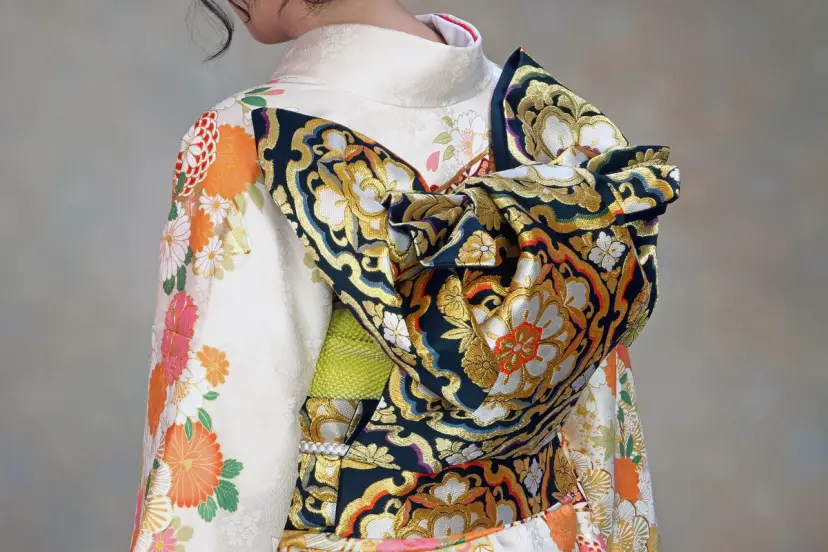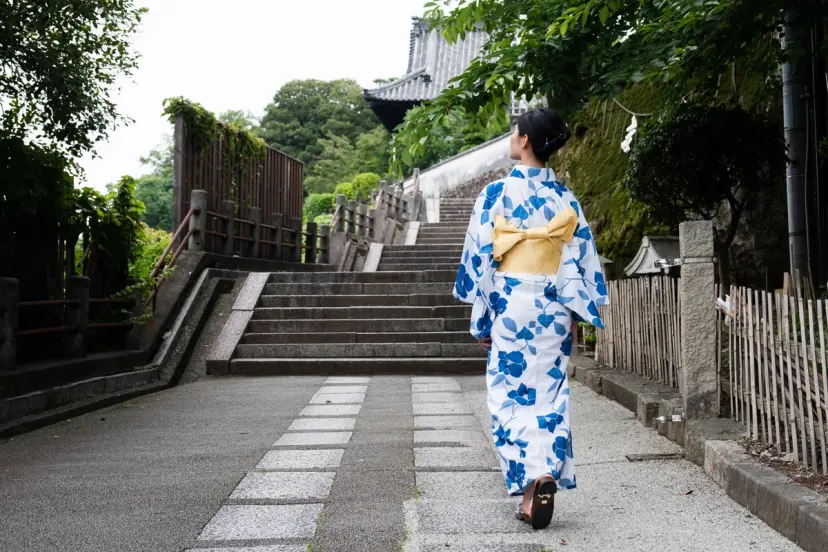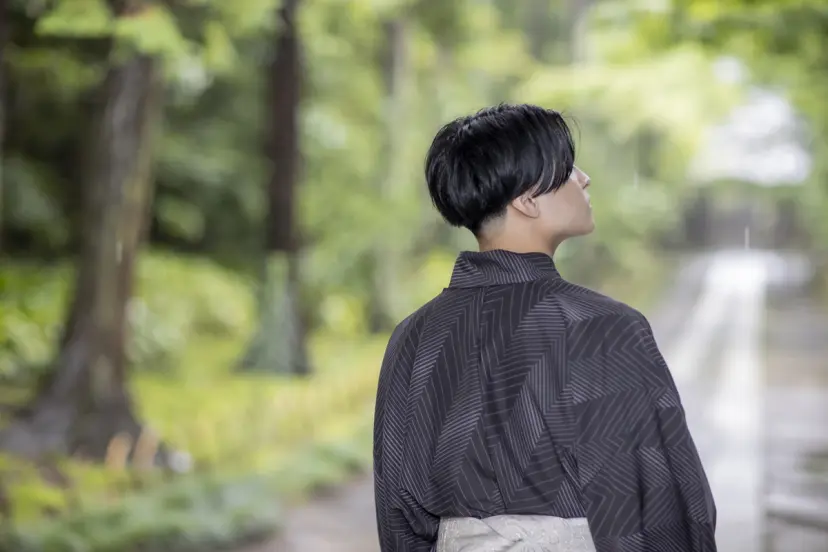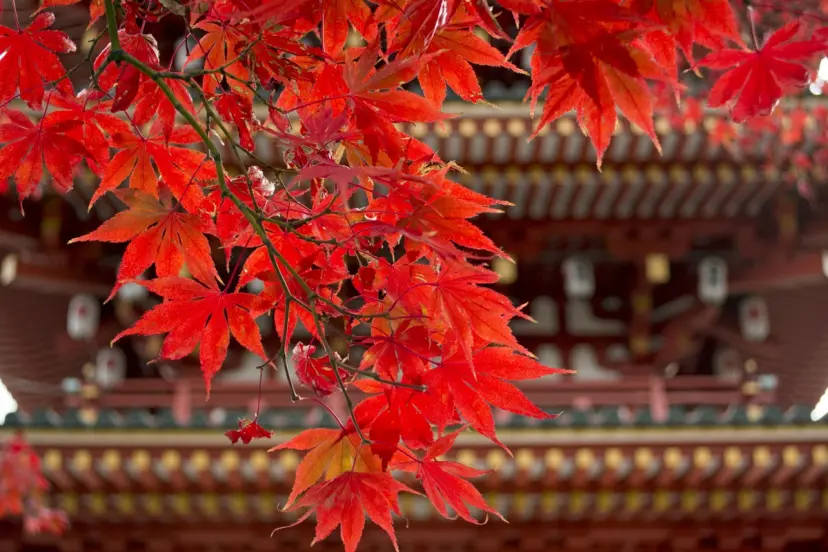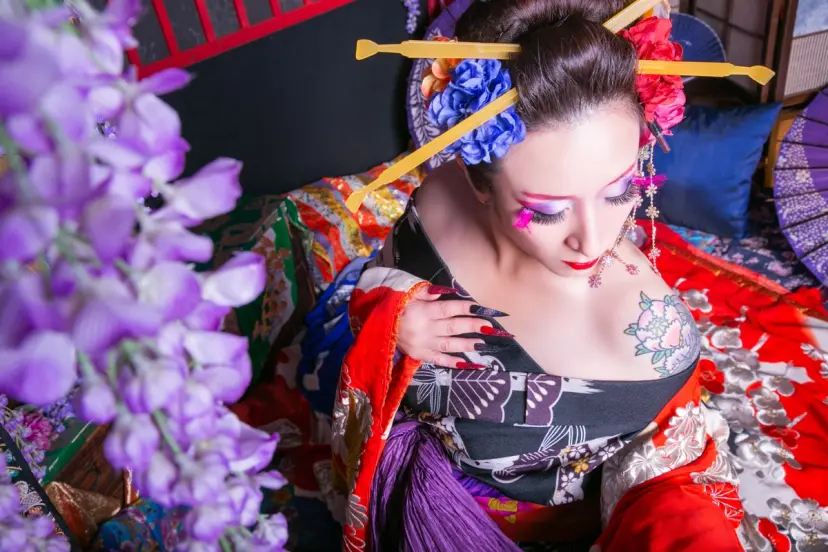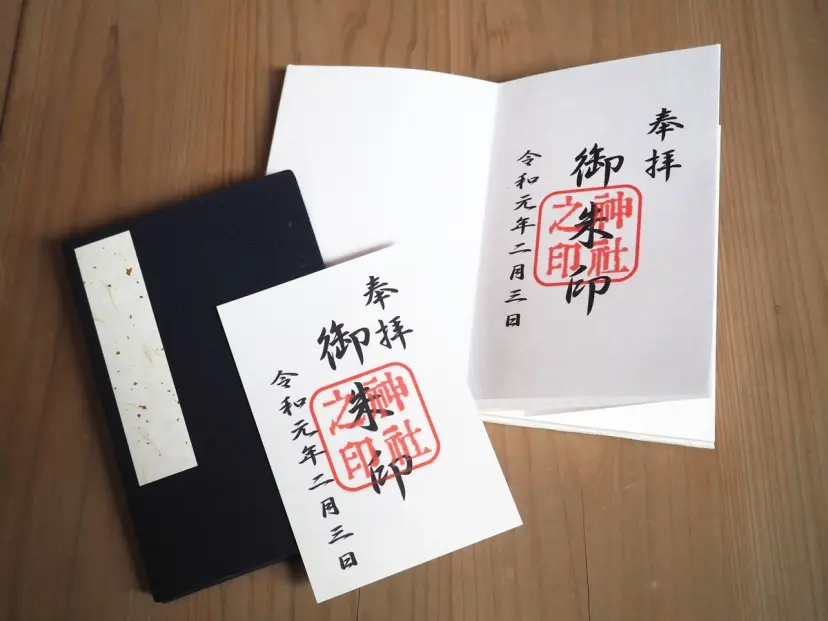A Guide to Kimono for Women: Styles for Every Occasion, from Formal to Casual

Sana Yoshida
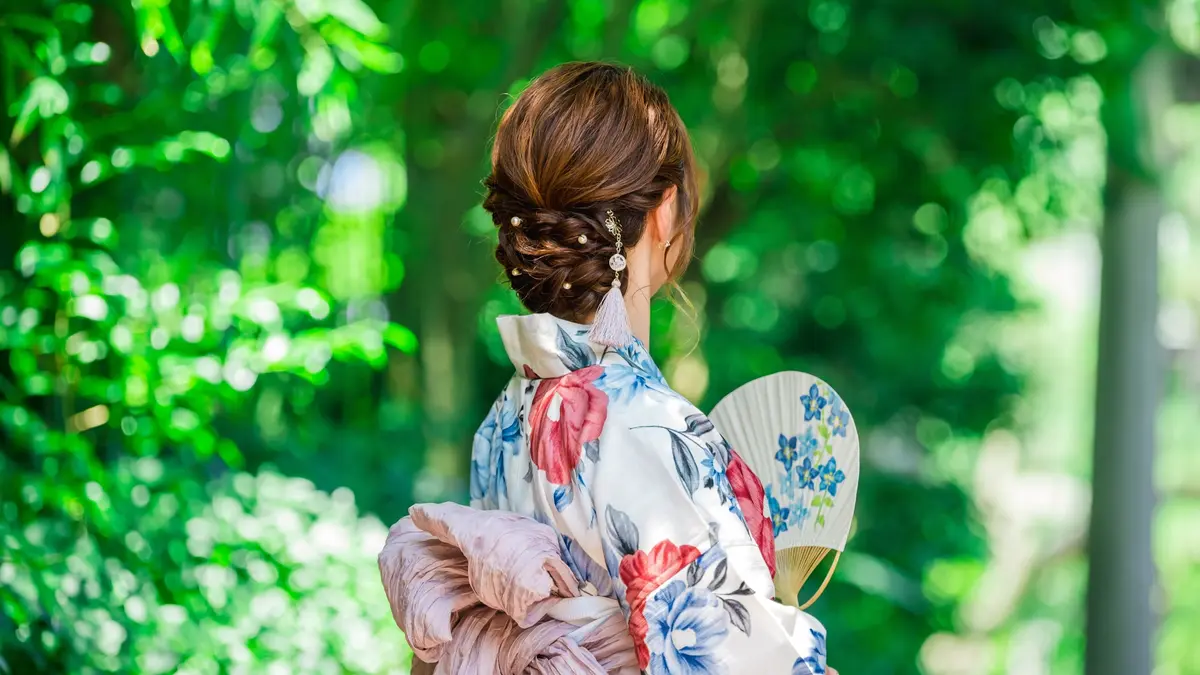
Kimono is Japan’s traditional clothing. Unlike Western clothing, which is tailored to follow the contours of the body, kimono are made from a single bolt of fabric that is cut and sewn in straight lines. This construction method makes them less dependent on body shape, allowing anyone to wear them comfortably. Many kimono shops offer rentals, which are popular not only with visitors from overseas but also with younger people in Japan who don’t often have chances to wear kimono.
If you’ve ever been interested in trying them on, this guide will walk you through the different types and features of kimono for women
Types of Kimono
Women’s kimono can be broadly divided into the following categories:
- Reiso / 礼装 (Formal wear)
- Junreiso・Ryakureiso / 準礼装・略礼装 (Semi-formal / Informal formal wear)
- Gaishutsu-gi・Sharegi / 外出着・洒落着 (Going-out / Fashionable wear)
- Fudangi / 普段着 (Everyday wear)
Unlike Western dresses, the styles you wear are clearly distinguished by marital status—some are for unmarried women, others for married women.
Let’s look at each category in detail.
Reiso / 礼装 (Formal Wear)
These are kimono for ceremonies and official occasions. Just as suits and dresses have ranks, kimono also have levels of formality. For women, bridal wear includes the Uchikake (打掛). The Furisode (振袖) is the most formal wear for unmarried women, and the Kurotomesode with five crests (黒留袖・五つ紋) is the most formal wear for married women.
At celebratory events you choose bright, festive colors and designs, while for funerals the basic rule is a black crested (mon) kimono.
Uchikake / 打掛 (Bridal Over-Kimono)
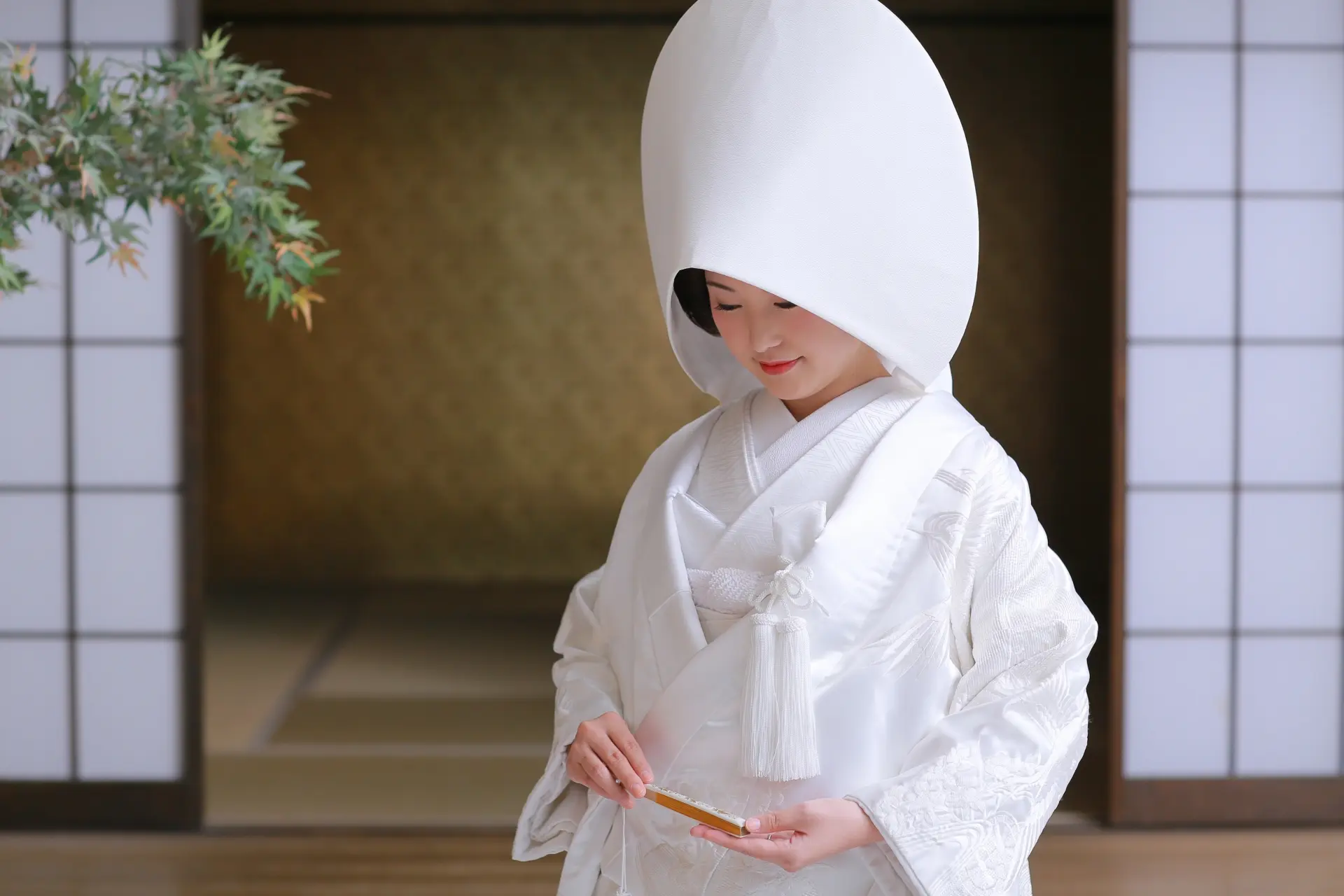
A bridal over-kimono worn layered over a kosode or furisode. At Shinto wedding ceremonies a pure white set called shiromuku is common; at the reception, colorful iro-uchikake are often worn.
Furisode / 振袖 (Long-Sleeved Kimono)
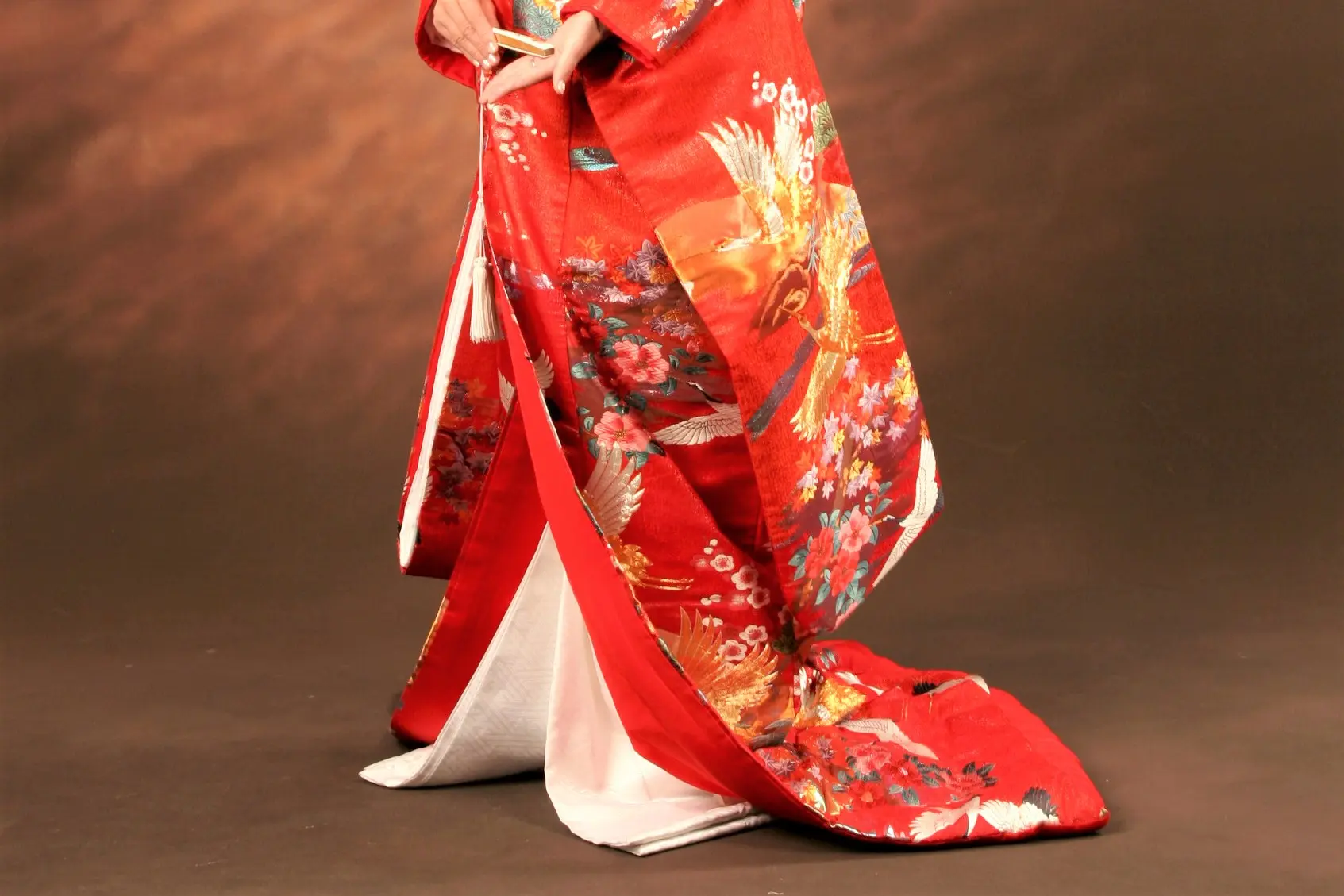
A long-sleeved kimono. The hon-furisode or ō-furisode with sleeves over 110 cm can also be used as bridal attire.
Furisode are the most formal wear for unmarried women, and there’s no strict age limit. However, because they’re strongly associated with youth and often feature bold colors and patterns, many people in their mid-30s shift to hōmongi (visiting wear) or irotomesode (colored tomesode).
Kurotomesode / 黒留袖・五つ紋 (Black Kimono with Five Crests)
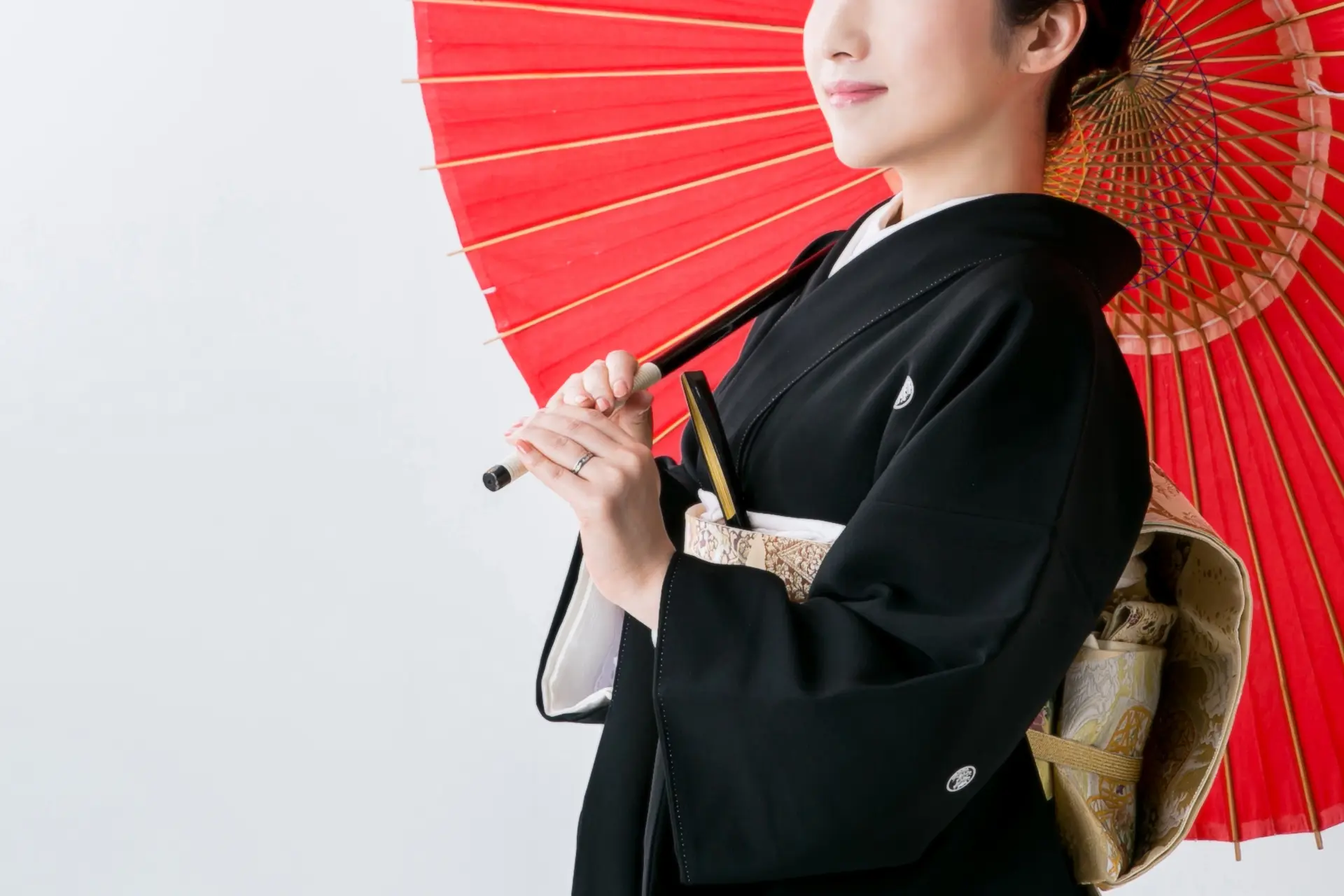
A black base color kimono bearing five family crests (mon). Only the hem carries an eba-moyō design—an overall pattern that continues seamlessly across the garment’s seams.
Mofuku / 喪服 (Mourning Wear)
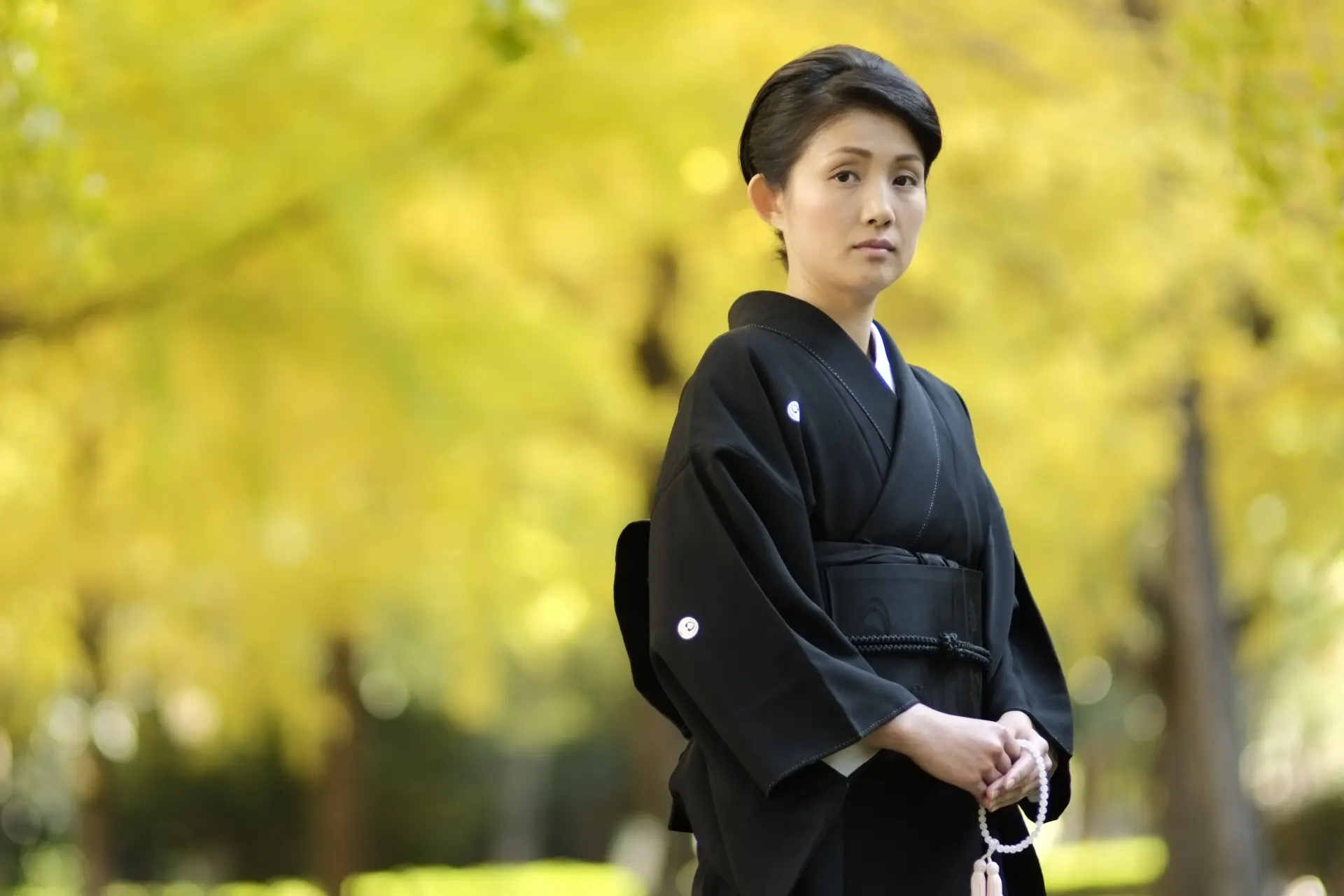
The mofuku is formal mourning attire worn at wakes, funerals, and memorial services. The seimofuku—a kimono with five mon—is worn by the chief mourner, the representative organizer, and close relatives up to the second or third degree.
Other family members may wear junmofuku (semi-formal mourning wear) with three or one crest in dark, subdued colors. The same three or one mon kimono in dark colors can function as ryakumofuku (informal mourning wear), but because it may still appear relatively formal or ornate, guests are most often advised to choose Western-style mourning attire.
Junreiso, Ryakureiso / 準礼装・略礼装 (Semi-Formal / Informal Formal Wear)
For wedding receptions, tea gatherings, parties, and similar occasions, junreiso or ryakureiso are appropriate.
Chu-Furisode, Ko-Furisode / 中振袖・小振袖 (Mid/Short-Length Furisode)
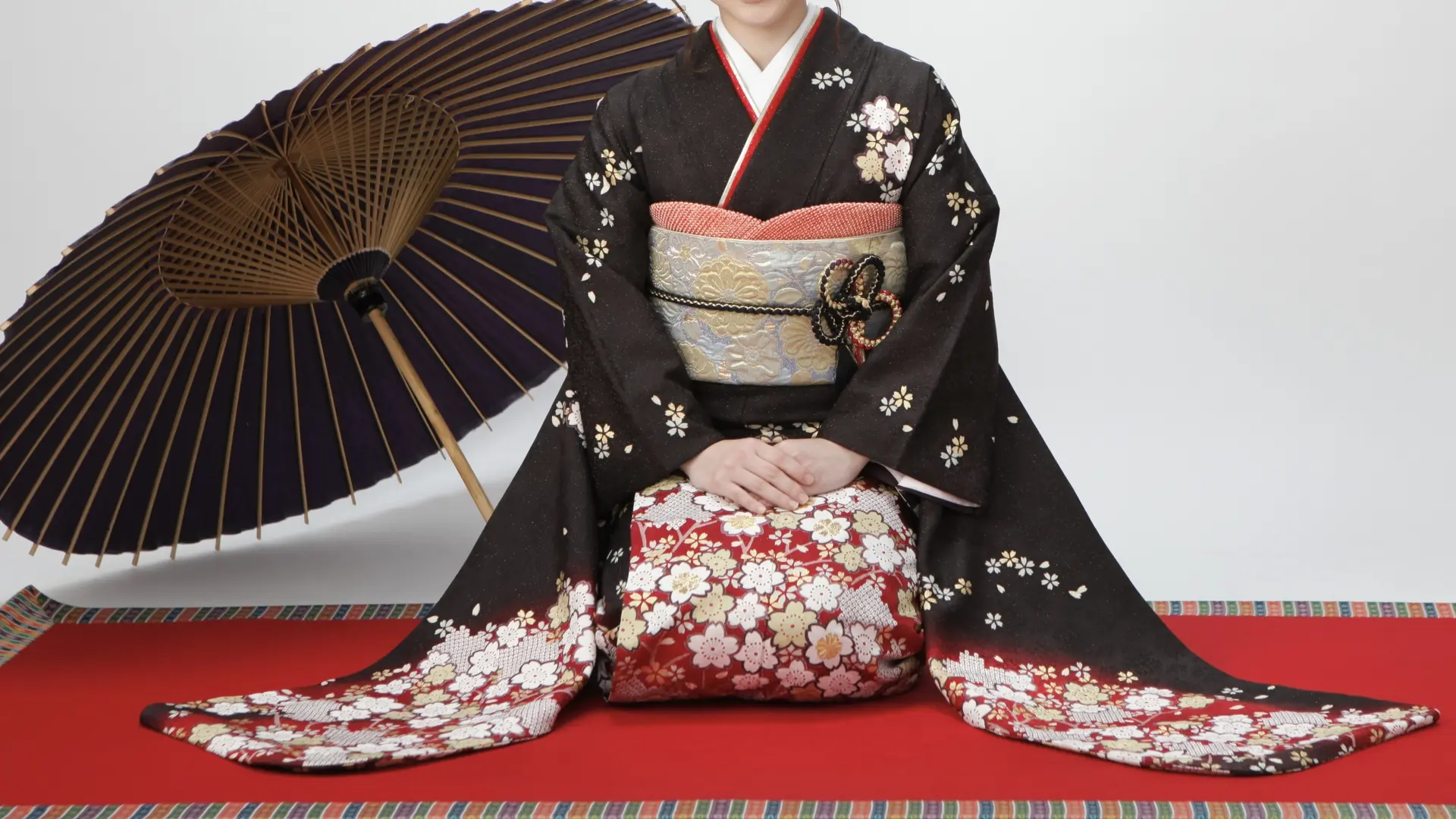
For Coming-of-Age ceremonies, attending weddings, New Year’s visits, and so on, women wear chū-furisode with sleeves around 100 cm or ko-furisode with sleeves around 85 cm.
Irotomesode / 色留袖 (Colored Tomesode)
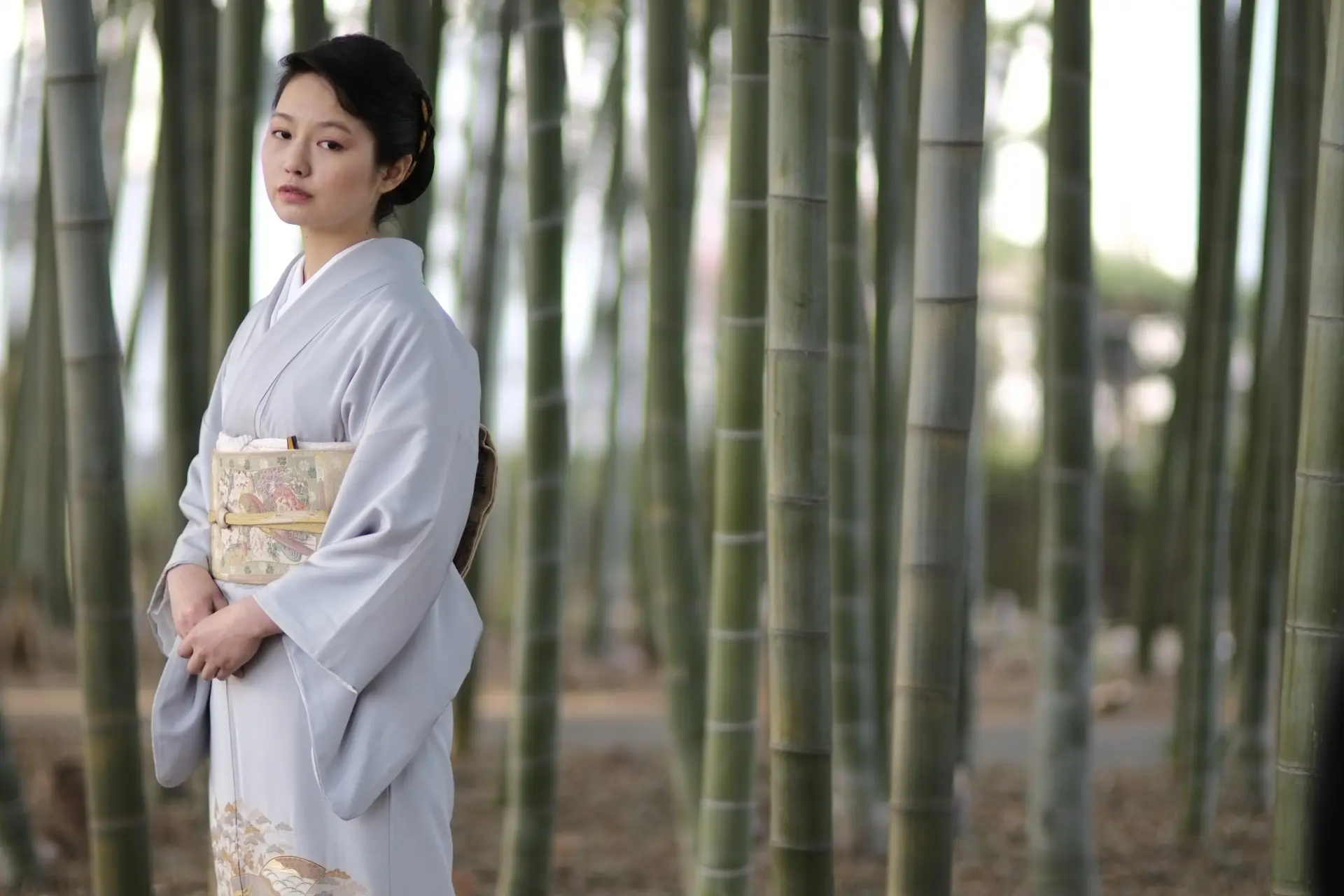
A formal kimono that can be worn by both unmarried and married women. Like the kurotomesode, only the hem carries an eba-moyō. With five crests it becomes first-rank formal wear; with three or one crest, it’s semi-formal.
Homongi / 訪問着 (Visiting Wear)
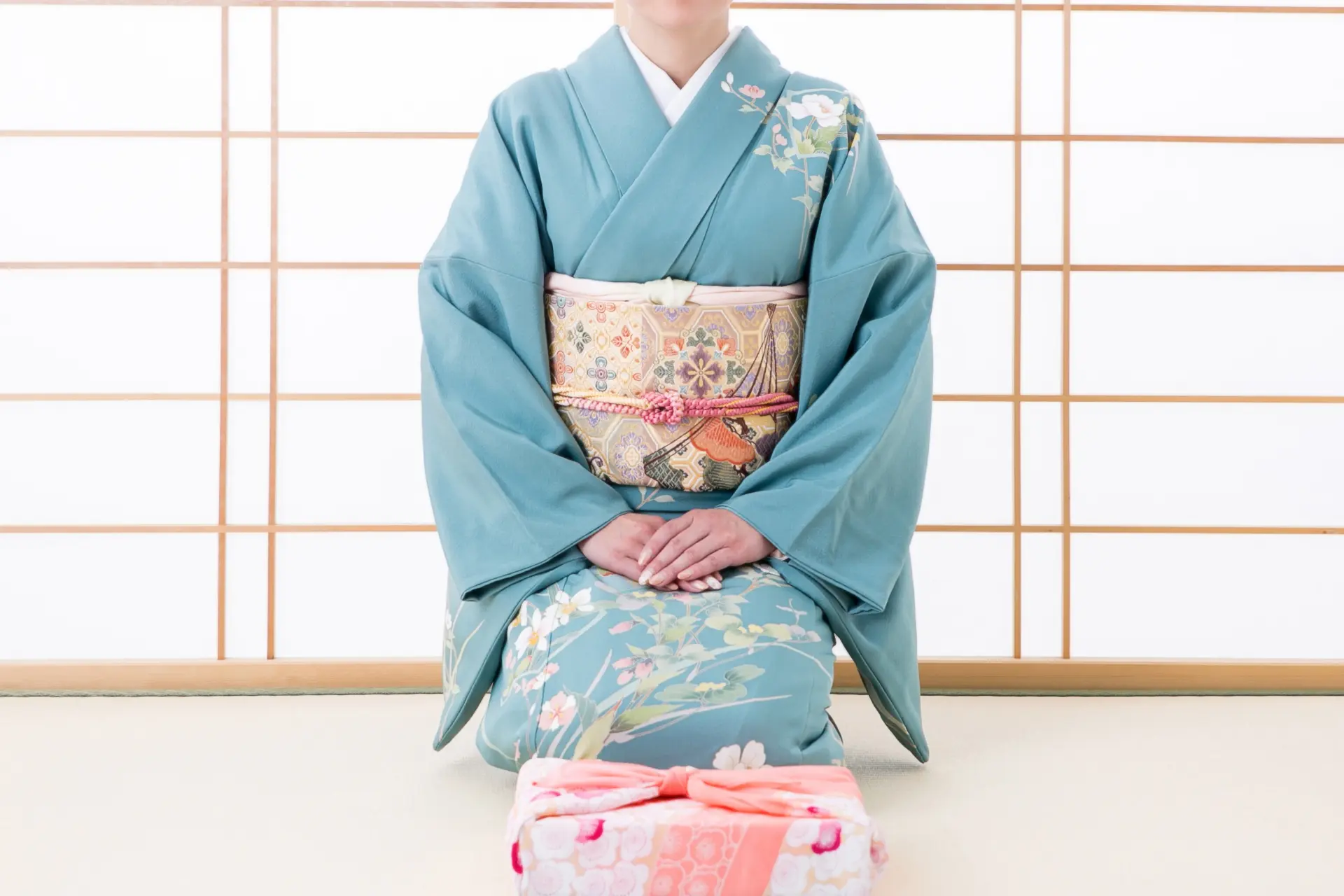
Visiting wear for both unmarried and married women. It features an eba-moyō pattern flowing continuously from the chest down to the hem.
Tsukesage / 付下
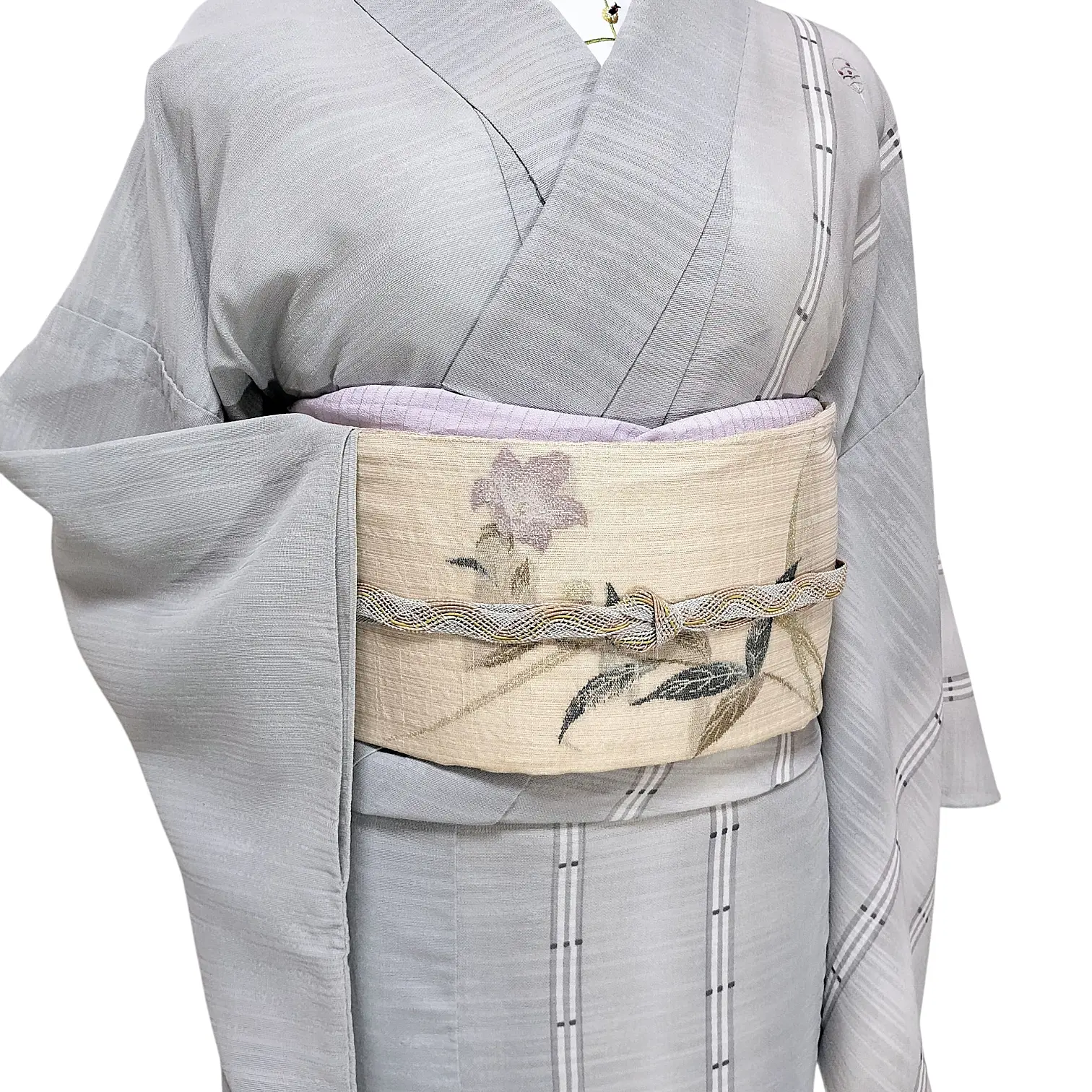
A kimono without an eba-moyō layout, making it more casual than hōmongi. However, there is a garment called tsukesage-hōmongi that have patterns that happen to connect across seams.
Iromuji Hitotsu-Mon / 色無地 一つ紋 (Single-Colored with One Crest)
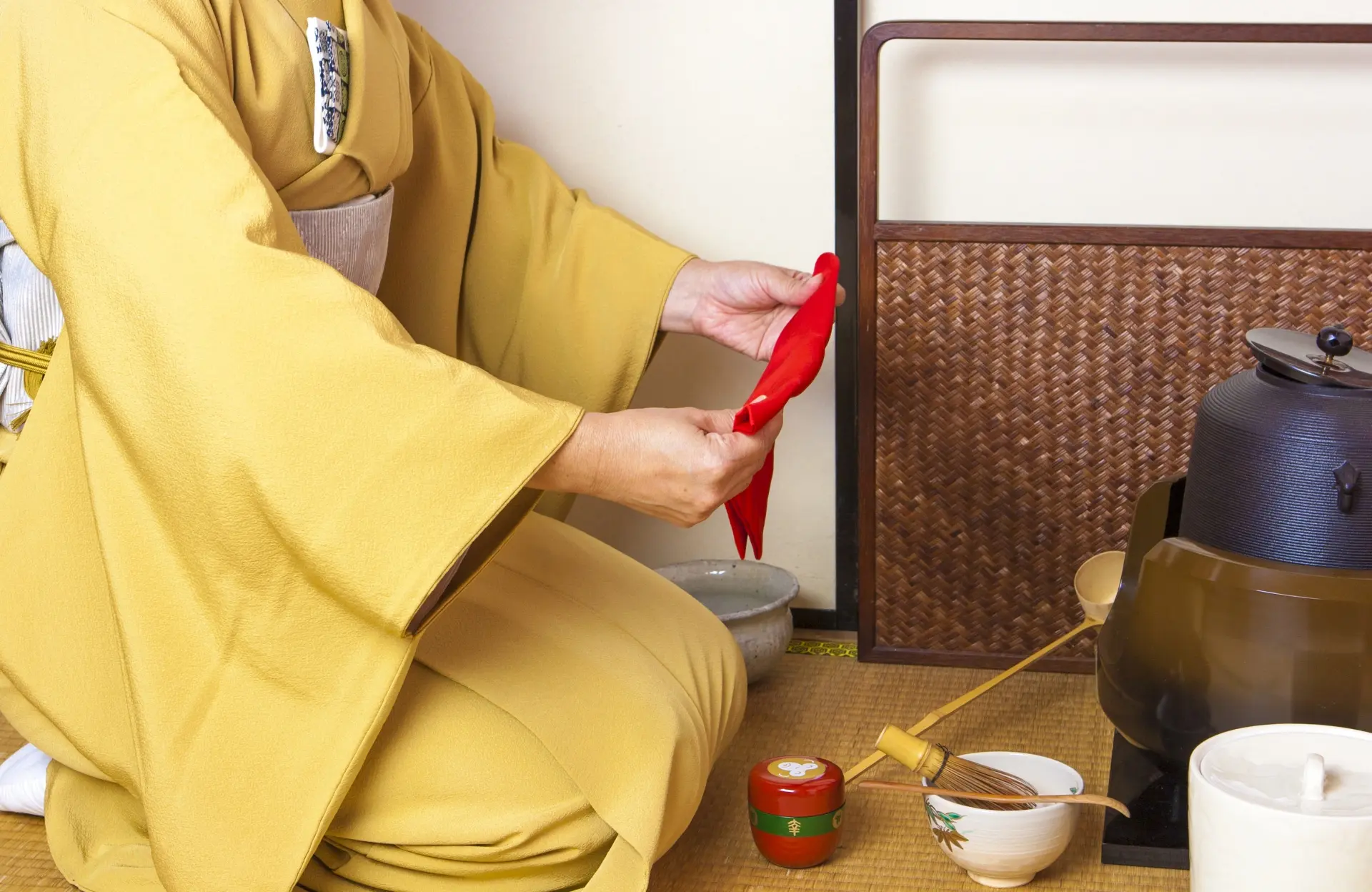
A single-color kimono (in any color except black) with one family crest. Versatile for semi-formal occasions.
Gaishutsu-gi/Sharegi / 外出着・洒落着 (Going-out / Fashionable Wear)
Casual kimono with komon (小紋): small, repeating patterns oriented in the same direction. If adorned with classical motifs, they can be worn to casual tea gatherings or parties.
Tsumugi Homongi / 紬の訪問着
While tsumugi kimono (made with woven silk fabric) is generally everyday wear, a hōmongi made of tsumugi strikes a nice balance between formal and stylish—perfect for dinners at restaurants, theater outings, and similar occasions.
Shibori / 絞り (Shibori)
Tie-dyed kimono hand-dyed by artisans; many are very expensive. Because crests can’t be added, it is not the highest form of formal kimono, but shibori furisode and shibori hōmongi are acceptable at formal events.
Fudangi / 普段着 (Everyday Wear)
These kimono are easy to care for and store, suitable for daily life and casual outings.
Omeshi / お召
Kimono made from fabric woven with pre-dyed threads are called omeshi—the name stems from the phrase “worn by nobility.” They are often used for more formal garments.
Tsumugi / 紬
A woven kimono made with slubbed threads; a yarn-dyed fabric. Generally considered everyday or going-out wear, so even expensive tsumugi are not recommended for tea ceremonies or weddings.
Kasuri / 絣
A kimono woven by intersecting warp and weft threads that have been resist-dyed to create blurred patterns—a rough equivalent to ikat in English.
Wool
Kimono made from wool are known for their excellent heat retention. The fabric is typically thick and warm, making it suitable for wear from early autumn to early spring.
Cotton
Kimono made from fabric woven with cotton thread that has a soft texture. It keeps you cool in summer and warm in winter, making it suitable for year-round wear.
Polyester
The most affordable option. It dries quickly after washing and is easy to care for, making it ideal for beginners.
Denim
Recently, denim kimono have become popular, especially among younger people. They’re casual and unisex, and pair well with sneakers or boots—drawing attention as kimono you can wear much like Western clothes.
Other Kimono
Yukata / 浴衣
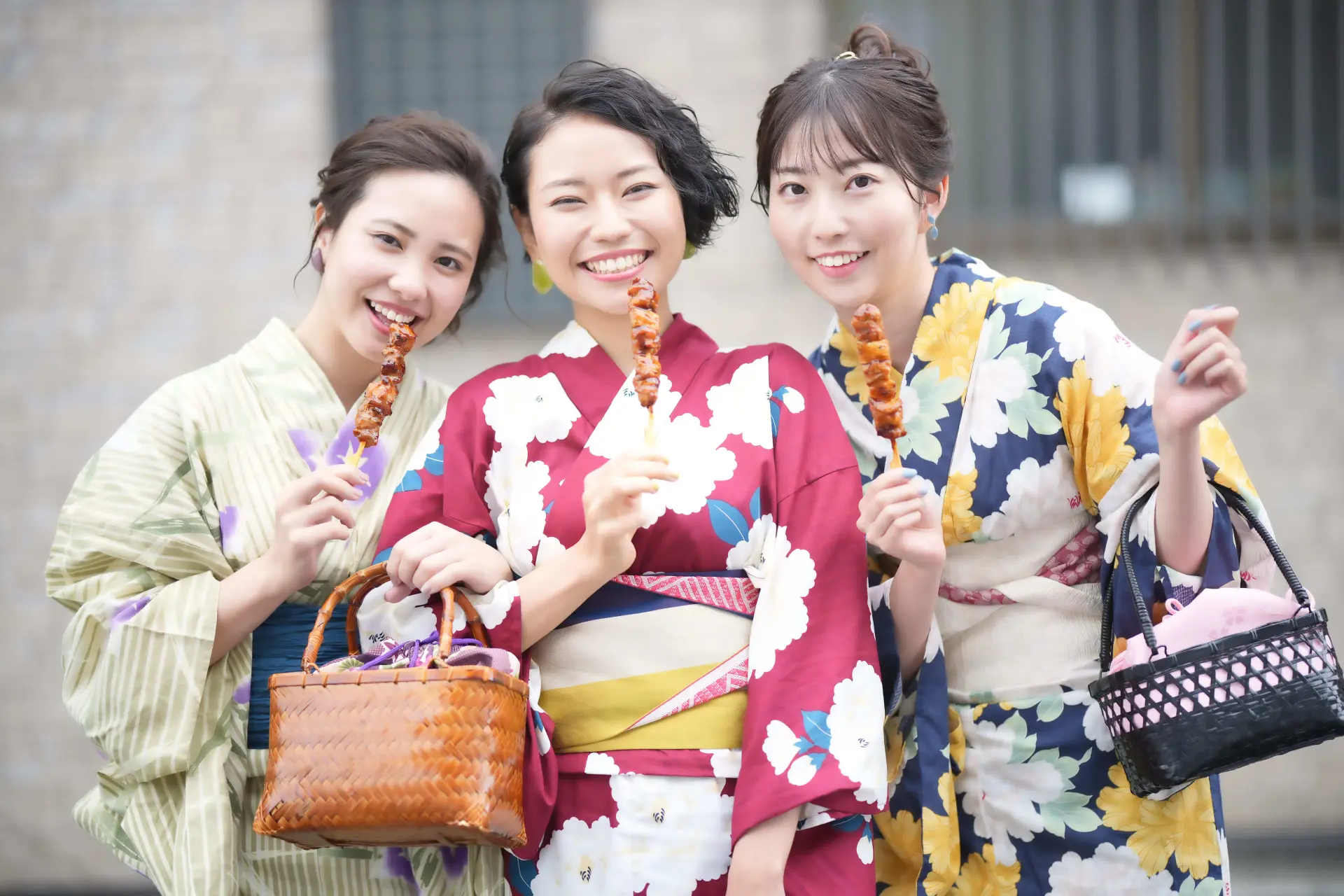
The yukata has long been rooted in Japan as a lightweight summer garment that’s easier to wear than a kimono. It’s often provided as loungewear at hot spring inns, making it perfect for relaxing and unwinding.
Maiko Isho / 舞妓衣装 (Maiko Attire)
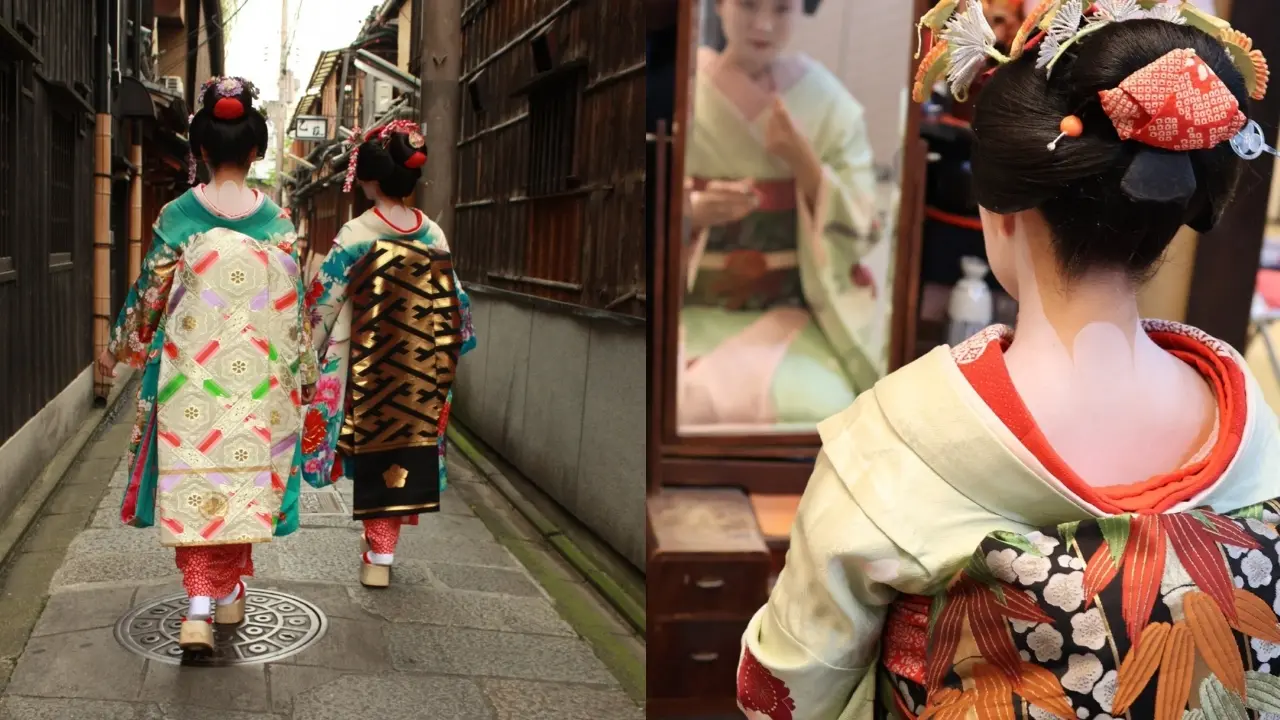
Unlike ordinary kimono, the hem is so long it may spread across the floor, and the obi (sash) hangs long. Styling, pattern placement, and colors change with a maiko’s years of experience and hairstyle. Look closely and you’ll notice how each maiko’s outfit differs.
Oiran Isho / 花魁衣装 (Oiran Attire)
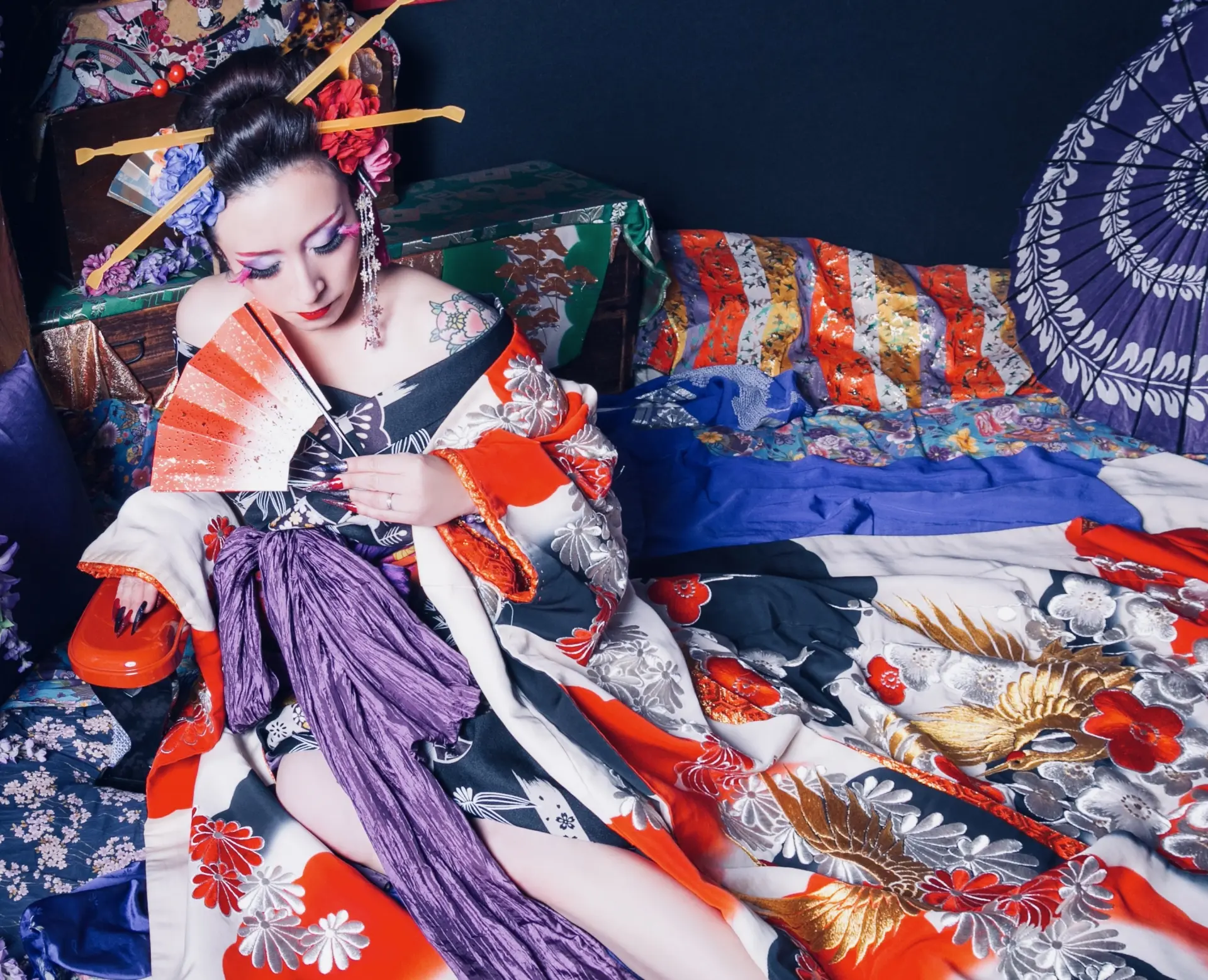
Modern-style makeup is also available with kimono experiences.
Lavish and ornate, oiran-style outfits are popular for kimono “dress-up” experiences. Like the maiko attire, the hem is long enough to trail on the floor. Distinctive features include tying the obi at the front and wearing the collar deeply lowered at the back.
Being Stylish is Choosing The Right Wear For The Occasion!
As you can see, kimono covers many styles, each chosen to suit the occasion. You can try kimono at department stores, specialty shops, and cultural facilities that offer dressing experiences. If you’re interested, search for a local program and give it a try!
